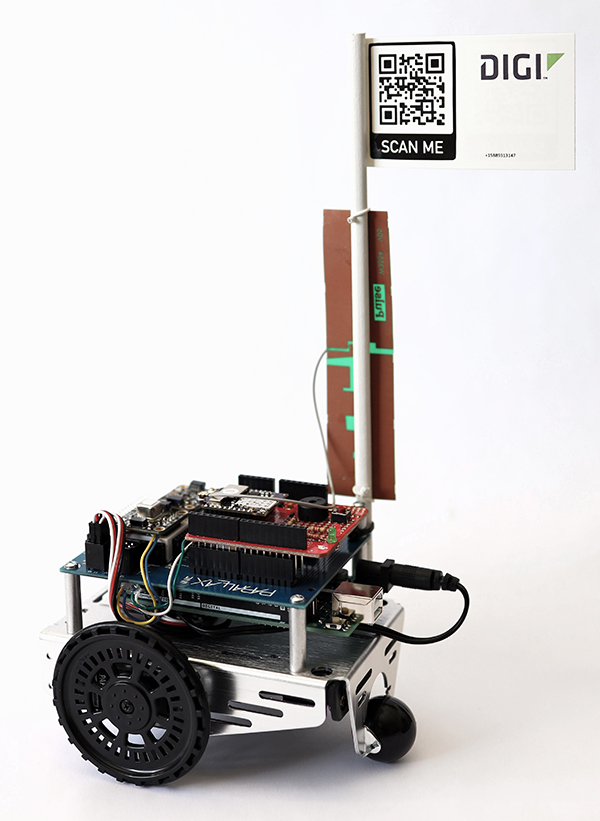The Earth Rover is a STEM educational robot that demonstrates the power of cellular IoT for remote devices. It is remotely controlled like a Mars Rover but operates here on Earth. The Earth Rover communicates using SMS text messages that make it easy for anyone to interact with it. No apps or logins are required.
Earth Rover features the Digi XBee 3 Cellular LTE-M/NB-IoT global module to communicate, and takes advantage of that module’s on-board GNSS/GPS to determine its location. The Rover accepts text message commands from multiple concurrent users, who can tell it drive in different directions, report environmental sensor data. play sounds, and send a map with its position marked. The Digi XBee 3 Cellular module can connect to robots anywhere in the world through 4G LTE-M cellular networks.
Interplanetary rovers are a terrific model for remotely located cellular IoT devices. Both need to do a lot with limited power, and must contend with constrained communications bandwidth, plus potentially intermittent connections. Both involve remote sensing in fairly challenging environments, and both must be controlled entirely via radio commands.
Once a wireless machine goes to Mars, the electronic leash is all we have. If a Mars rover gets stuck, suffers a software problem, loses a sensor, or needs new instructions, the response is always a radio command. Nobody will come with a wrench or an oil can. No component will ever be replaced and nothing will ever be cleaned.
It’s fundamentally the same for cellular IoT devices. Many are installed in highly inaccessible places, like inside a private home where the vendor does not have access. In other cases, access is technically possible but economically impractical, due to the size or distribution of the device network. The cost to visit 100,000 locations and press 100,000 reset buttons, not to mention the time involved, means these devices might as well be on Mars. So just like on the Red Planet, radio communications provide our only connection. The electronic IoT leash is all we have.
For students learning wireless design, the process of building robotics that can be remotely configured and controlled from anywhere on the planet — even if the robot is somewhere outside the stratosphere — offers great learning that can build great skills for the future.
https://www.digi.com/blog/post/digi-earth-rover-inspiring-stem-robotics
https://www.faludi.com/2022/08/19/digi-earth-rover-inspiring-stem-robotics/

